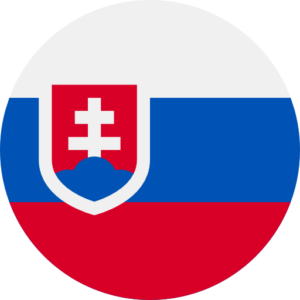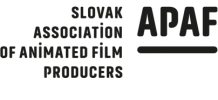
Slovakia’s animation industry faces significant challenges, but its resilient and ambitious producers are working hard to adapt and find new ways to thrive.
A young industry takes shape
Having become an independent democratic state in 1993 after the peaceful dissolution of Czechoslovakia, Slovakia has developed its own separate animation industry to the Czech Republic, while retaining close links with its neighbour. As a result, coproductions between the two are common due to the shared language, culture and funding structures.
Bratislava, having played a key role in Czechoslovakia’s animation sector under communism, remains the country’s main animation hub, with the Slovakian capital city home to most of the country’s studios.
These companies benefit from Slovakia’s growing talent pool and the country’s well-structured system for film and animation support, which includes development grants and rebates.
Many Slovak animators work in short-form and art-house animation, supported by cultural grants rather than commercial markets. Notable animators to have created acclaimed short films include Martin Smatana (Hello Summer), Matúš Vizár (Free the Chickens) and Dávid Štumpf (Sh_t Happens). Influenced by Slovak folklore, literature and fine art, Slovak animators have been keen explore themes like identity, history and social commentary in their introspective, experimental and auteur driven short films.
However, following the launch of the Slovak Audiovisual Fund in 2010 as the main public funding institution for the Slovak audiovisual culture and industry, producers began financing feature-length animated films for the first time.

Audiovisual fund crucial to growth
Slovakia was one of the first countries in Central and Eastern European region to establish a dedicated Audiovisual Fund that covers both film and television. The Slovak Audiovisual Fund plays a pivotal role in nurturing the country’s animation industry, offering structured support that spans development through to distribution, helping to foster both domestic talent and international partnerships.
Animation projects are eligible for funding under Program 1, which encompasses the development, creation and production of audiovisual works, including feature films, documentaries, animation, school films and experimental works. The fund offers various forms of financial support, such as grants, loans and stipends to cater to different stages and aspects of animation production.
Crucially, animation development is well resourced, which reflects the growing understanding within the fund that animation requires longer timelines and more intensive early-stage work.
This support is being rewarded, with several long-gestating projects finally reaching audiences in the 2020s. Key recent titles include Tony, Shelly & the Magic Light (2023), Journey to Yourland (2022), The Websters (2022), Living Large (2024), and Tales from the Magic Garden (2025).
These productions are not only milestones in terms of format and ambition but also showcase the benefits of international collaboration. Most Slovak animated features are coproductions—particularly with the Czech Republic, with whom Slovakia shares a unique ‘parity’ funding model that treats co-financed projects as majority Slovak, even if the balance is 60-40.
International collaboration remains vital to the sustainability of Slovak animation. Beyond Czech partnerships, coproductions increasingly involve companies in countries such as France, Poland, Slovenia and Italy.
Slovakia also offers a competitive 33% cash rebate, with no upper limit and a minimum spend of €50,000 for animated projects. This incentive has helped attract international service work and coproductions, compensating in part for limited domestic commissioning opportunities.
Fighting for cultural independence
While the country has made significant progress in establishing its animation sector over the past decade, cultural policies and under-resourced local broadcasters cast a shadow over the sector’s stability and future direction, mirroring similar developments across many countries in Central Europe.
The Slovak Audiovisual Fund faces significant threats due to political developments, with legislation enacted that effectively transforms the fund from an independent body into one susceptible to political influence, with funding decisions potentially based on ideological alignment rather than artistic merit. This interference is being fiercely resisted by Slovakia’s animation community.
Meanwhile, the state broadcaster, having rebranded from Radio & Television of Slovakia (RTVS) to Slovak Television & Radio (STVR) in 2024, has entered a new era, with the country’s producers awaiting further detail on the broadcaster’s ambitions in animation. With plans to potentially increase the amount of children’s content it offers, STVR could emerge as a crucial commissioner of new projects as series development remains scarce due to a lack of investors.
Despite numerous obstacles, Slovakia’s animation community has maintained a sense of unity. In the face of cuts to LGBTQ+ cultural initiatives and pressures to prioritise nationalist content, animators and cultural producers have banded together to protect inclusive cultural expression. Meanwhile, anxieties about AI’s creative implications persist, though many Slovak producers see its potential as a technical aid rather than a threat.

Slovakia’s animation industry faces significant challenges, but its resilient and ambitious producers are working hard to adapt and find new ways to thrive.
A young industry takes shape
Having become an independent democratic state in 1993 after the peaceful dissolution of Czechoslovakia, Slovakia has developed its own separate animation industry to the Czech Republic, while retaining close links with its neighbour. As a result, coproductions between the two are common due to the shared language, culture and funding structures.
Bratislava, having played a key role in Czechoslovakia’s animation sector under communism, remains the country’s main animation hub, with the Slovakian capital city home to most of the country’s studios.
These companies benefit from Slovakia’s growing talent pool and the country’s well-structured system for film and animation support, which includes development grants and rebates.
Many Slovak animators work in short-form and art-house animation, supported by cultural grants rather than commercial markets. Notable animators to have created acclaimed short films include Martin Smatana (Hello Summer), Matúš Vizár (Free the Chickens) and Dávid Štumpf (Sh_t Happens). Influenced by Slovak folklore, literature and fine art, Slovak animators have been keen explore themes like identity, history and social commentary in their introspective, experimental and auteur driven short films.
However, following the launch of the Slovak Audiovisual Fund in 2010 as the main public funding institution for the Slovak audiovisual culture and industry, producers began financing feature-length animated films for the first time.
Audiovisual fund crucial to growth
Slovakia was one of the first countries in Central and Eastern European region to establish a dedicated Audiovisual Fund that covers both film and television. The Slovak Audiovisual Fund plays a pivotal role in nurturing the country’s animation industry, offering structured support that spans development through to distribution, helping to foster both domestic talent and international partnerships.
Animation projects are eligible for funding under Program 1, which encompasses the development, creation and production of audiovisual works, including feature films, documentaries, animation, school films and experimental works. The fund offers various forms of financial support, such as grants, loans and stipends to cater to different stages and aspects of animation production.
Crucially, animation development is well resourced, which reflects the growing understanding within the fund that animation requires longer timelines and more intensive early-stage work.
This support is being rewarded, with several long-gestating projects finally reaching audiences in the 2020s. Key recent titles include Tony, Shelly & the Magic Light (2023), Journey to Yourland (2022), The Websters (2022), Living Large (2024), and Tales from the Magic Garden (2025).
These productions are not only milestones in terms of format and ambition but also showcase the benefits of international collaboration. Most Slovak animated features are coproductions—particularly with the Czech Republic, with whom Slovakia shares a unique ‘parity’ funding model that treats co-financed projects as majority Slovak, even if the balance is 60-40.
International collaboration remains vital to the sustainability of Slovak animation. Beyond Czech partnerships, coproductions increasingly involve companies in countries such as France, Poland, Slovenia and Italy.
Slovakia also offers a competitive 33% cash rebate, with no upper limit and a minimum spend of €50,000 for animated projects. This incentive has helped attract international service work and coproductions, compensating in part for limited domestic commissioning opportunities.
Fighting for cultural independence
While the country has made significant progress in establishing its animation sector over the past decade, cultural policies and under-resourced local broadcasters cast a shadow over the sector’s stability and future direction, mirroring similar developments across many countries in Central Europe.
The Slovak Audiovisual Fund faces significant threats due to political developments, with legislation enacted that effectively transforms the fund from an independent body into one susceptible to political influence, with funding decisions potentially based on ideological alignment rather than artistic merit. This interference is being fiercely resisted by Slovakia’s animation community.
Meanwhile, the state broadcaster, having rebranded from Radio & Television of Slovakia (RTVS) to Slovak Television & Radio (STVR) in 2024, has entered a new era, with the country’s producers awaiting further detail on the broadcaster’s ambitions in animation. With plans to potentially increase the amount of children’s content it offers, STVR could emerge as a crucial commissioner of new projects as series development remains scarce due to a lack of investors.
Despite numerous obstacles, Slovakia’s animation community has maintained a sense of unity. In the face of cuts to LGBTQ+ cultural initiatives and pressures to prioritise nationalist content, animators and cultural producers have banded together to protect inclusive cultural expression. Meanwhile, anxieties about AI’s creative implications persist, though many Slovak producers see its potential as a technical aid rather than a threat.

APAF
Slovak Association of Animated Film Producers aims its activities primarily on the development and support of animated film production in Slovakia. Slovak animation has been on the rise in recent years, thanks to the support of Slovak Audiovisual Fund, Ministry of Culture of Slovak Republic, RTVS and cooperation with coproducers and partners from other countries.
APAF has been co-organizer of Visegrad Animation Forum (VAF). The main focus of VAF is to attract new partners, producers, broadcasters, film distributors, find ways of financing animated films and TV series, and also increase professional experience.


 Animation in Slovakia
Animation in Slovakia